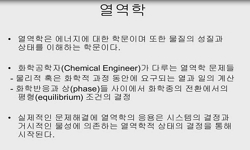The seasonal variation in the zooplankton community and hydrographic conditions were examined in three regions (inner, central, and outer regions) of Gamak Bay, Korea. Zooplankton samples were collected over a period of 12 months from January to Decem...
http://chineseinput.net/에서 pinyin(병음)방식으로 중국어를 변환할 수 있습니다.
변환된 중국어를 복사하여 사용하시면 됩니다.
- 中文 을 입력하시려면 zhongwen을 입력하시고 space를누르시면됩니다.
- 北京 을 입력하시려면 beijing을 입력하시고 space를 누르시면 됩니다.
https://www.riss.kr/link?id=A106975741
- 저자
- 발행기관
- 학술지명
- 권호사항
-
발행연도
2020
-
작성언어
English
- 주제어
-
등재정보
KCI등재
-
자료형태
학술저널
- 발행기관 URL
-
수록면
231-247(17쪽)
- DOI식별코드
- 제공처
-
0
상세조회 -
0
다운로드
부가정보
다국어 초록 (Multilingual Abstract)
The seasonal variation in the zooplankton community and hydrographic conditions were examined in three regions (inner, central, and outer regions) of Gamak Bay, Korea. Zooplankton samples were collected over a period of 12 months from January to December 2006. The hydrographical parameters of temperature, salinity, chlorophyll-a concentrations, dissolved oxygen, and chemical oxygen demand were measured. The total zooplankton density varied from 411 to 58,485 ind. m<sup>-3</sup>, with peaks in early summer. A total of 65 taxa accounted for approximately 86.9% of the annual mean zooplankton density: Noctiluca scintillans (30.9%) Paracalanus parvus s. l.(24.3%), Acartia omorii(11.9 %), Eurytemora pacifica (5.7%), cladocerans (4.1%), cirriped larvae (3.8%), Oithona similis (3.7%), and Pseudevedne tergestina(2.5%). Copepods dominated numerically throughout the year and comprised 54.3% of the total zooplankton. Most of the dominant copepods showed a well-defined seasonal pattern. The density and diversity of zooplankton in Gamak Bay were influenced by the hydrographic environment that was subject to significant spatial and temporal variations. Multivariate statistics showed that seasonal temperature was the most significant predictor of zooplankton taxa, density, and diversity, as well as the density of dominant taxa. Our results suggest that fluctuations in the zooplankton populations, particularly copepods, followed progressive increments in the temperature and COD concentrations.
동일학술지(권/호) 다른 논문
-
둥근성게(Mesocentrotus nudus)의 수정 및 배아 발생률에 미치는 신방오도료(Diuron, Irgarol)의 독성영향
- 한국환경생물학회
- 황운기
- 2020
- KCI등재
-
- Korean Society of Environmental Biology
- Jo, Seung-Woo
- 2020
- KCI등재
-
- 한국환경생물학회
- 윤성수
- 2020
- KCI등재
-
유동세포분석에 의한 참전복(Haliotis discus hannai) 세포내 DNA 함량 분석 최적화
- 한국환경생물학회
- 박인석
- 2020
- KCI등재






 ScienceON
ScienceON 코리아스칼라
코리아스칼라






